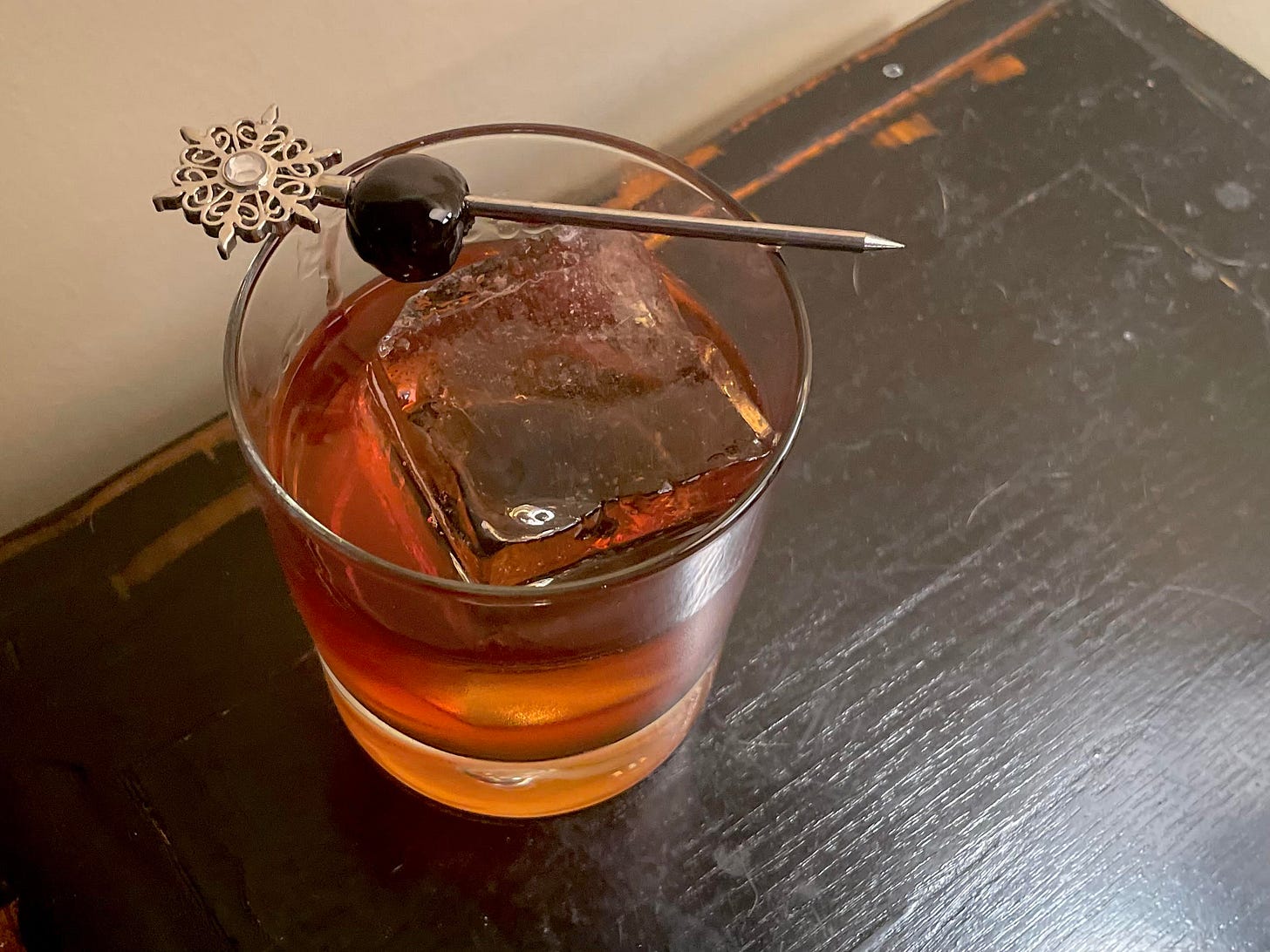Let’s Make a Holiday Old Fashioned With Lyle’s Golden Syrup
How to work with a new ingredients and workshop new drinks.
For the longest time, I’ve been intending to try making a cocktail with Lyle’s Golden Syrup, a British baking syrup has a distinctive flavor — or perhaps I should say flavour? — that’s buttery with hints of caramel and toffee.
That flavor profile, I thought, would lend itself well to a Christmastime Old Fashioned of sorts. And indeed, after some experimentation, it does.
Like I said: For a long time, I’d been intending to try making a cocktail with Lyle’s Golden Syrup. We keep Lyle’s around the house for baking, so I was familiar with it. But I’d never used it in a drink before. Which meant that first I had to figure out how to use it.
So this week, we’re going to look at how to incorporate a new ingredient into a drink, and how to think through and design a new cocktail around a signature ingredient by stacking ingredients and layering flavors in a familiar format.
Along the way, we’ll make an Old Fashioned variation — or three.
In a Lyle, Crocodile
For those who don’t know it, Lyle’s is a thick, sweet, inverted syrup from the U.K.that is often used in baking, sometimes as a substitute for honey. You can probably buy it in your favorite well-stocked grocery store, and if not, it’s available online.
To give you an idea of its place in the culinary world, it’s advertised as a “a perfect companion for pancakes and porridge.” More generically, it’s known as “light treacle,” so if you’ve ever heard someone dismiss a movie or a book as “treacle,” this is what they’re comparing it to. It’s the baking ingredient equivalent of a sappy romance.
But don’t dismiss it: In baked goods, and cookies in particular, Lyle’s is delicious, adding both texture and a butterscotch-like flavor.
From time to time, I have read descriptions of big-city candy shops during the late 1800s, when processed sugary confections were more rarified than they are today. Lyle’s, which dates back to the 1880s, tastes like what I imagine many of the candies at those candy shops tasted like. It tastes like something from another era.
That, in turn, makes it a great fit for a riff on an Old Fashioned, a drink that in its most primitive forms dates back to the early 1800s, but came into its own during the second half of that century.
To make a basic Lyle’s Old Fashioned, however, I first had to make it usable in cocktails.
Did I mention Lyle’s is thick? That it is sometimes used as a substitute for honey?
If not: Lyle’s is thick. Really, really thick. Thicker and goopier and stickier and messier than some honeys. Which presents a bit of a problem for mixing into cocktails directly.
There is an amusing passage in Kingsley Amis’ Everyday Drinking — one of the chief inspirations for this newsletter — in which Amis describes making simple syrup and the considerable effort he feels it involves. “Remember,” he wrote, “you are dealing with one of the stickiest substances known, so select with forethought the surface where you will do the pouring, and cover it with months-old newspaper.”
Amis might have been exaggerating about simple syrup, which is relatively easy to make and use without mess or fuss. (He apparently was unaware of the blender method.)
But his vivid, over-the-top description could be applied more accurately to Lyle’s, which is impressively viscous and sticky, and thus a bit of a challenge to use.




